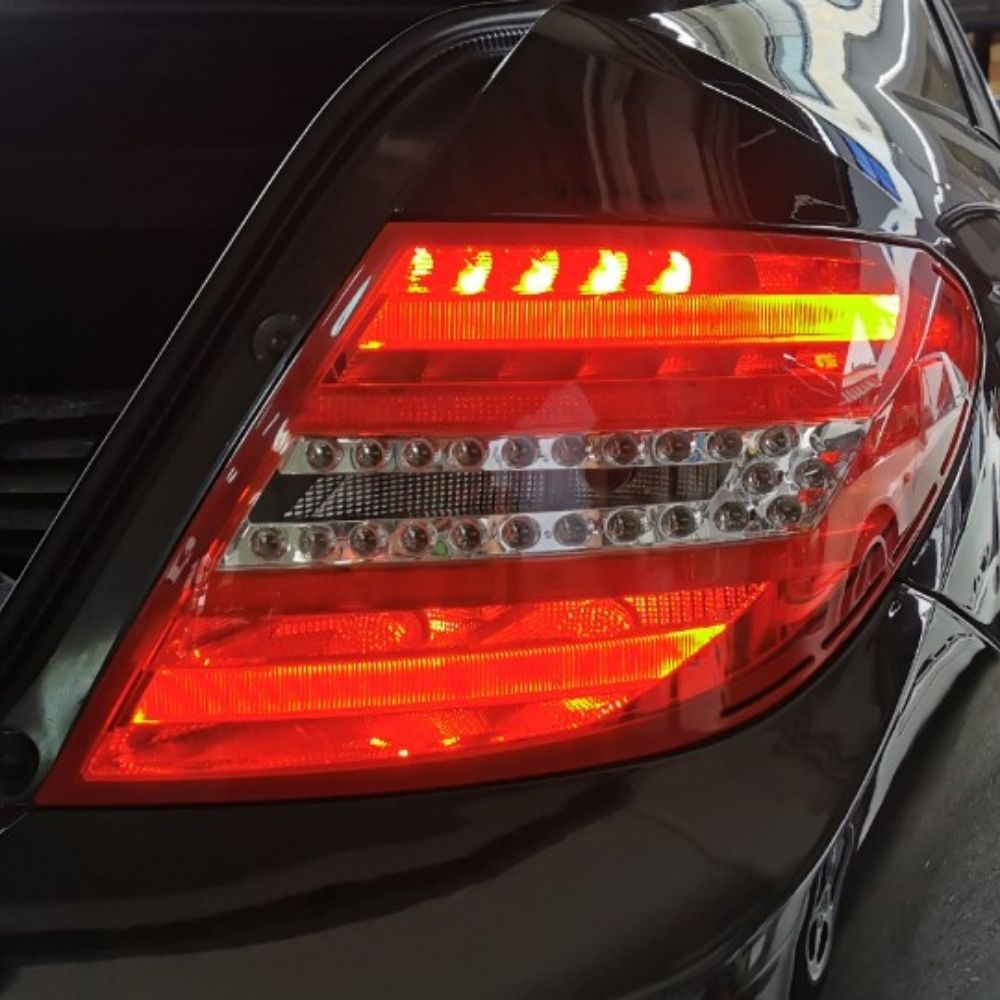
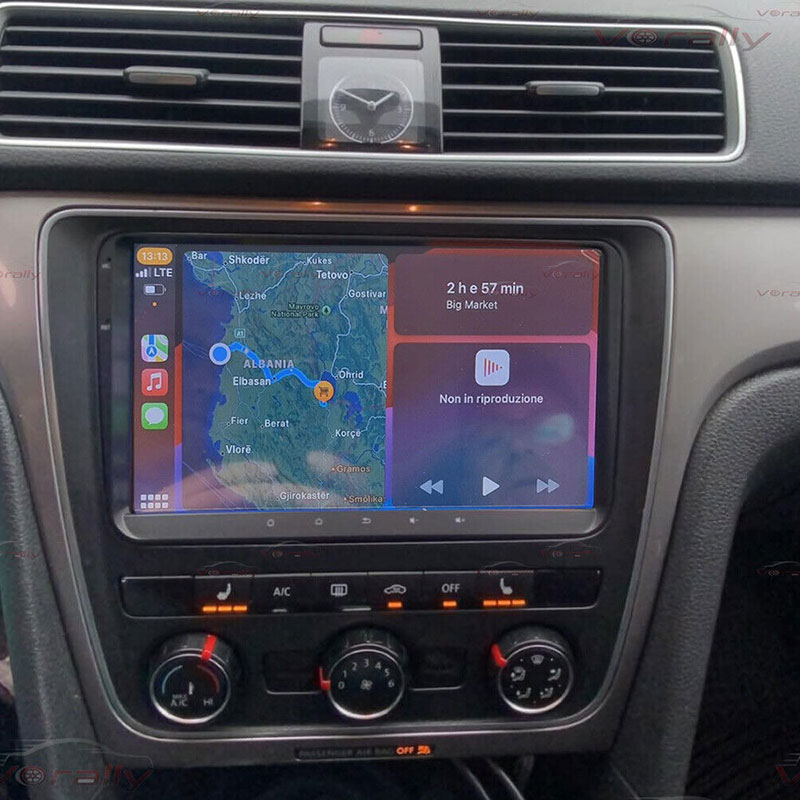
VW Passat 2014 Navigation Update procedures are crucial for maintaining optimal performance and accessing the latest road networks; AutoExplain. provides comprehensive guidance to ensure your system is current. This guide offers a detailed walkthrough, empowering you to enhance your driving experience with updated maps, improved system stability, and access to new points of interest, ensuring every journey is efficient and informed. Keeping your Passat’s navigation system refreshed is a straightforward process that significantly boosts its utility and reliability for both daily commutes and long-distance travel.
Navigate your routes with confidence by ensuring your Volkswagen Passat’s mapping software reflects the most current infrastructure and system enhancements. Utilizing an updated Volkswagen map database enhances travel planning and execution. Performing a Passat 2014 navigation firmware update is key to leveraging the full capabilities of your vehicle’s infotainment unit.
Table of Contents
ToggleOwning a Volkswagen Passat 2014 signifies an appreciation for German engineering, reliability, and comfort. A key component contributing to this driving pleasure is the integrated navigation system. However, the world outside your windscreen is constantly evolving: new roads are built, existing ones are rerouted, points of interest (POIs) like fuel stations, restaurants, and businesses change locations or emerge, and speed limits are adjusted. Relying on an outdated navigation system is like using an old map – it can lead to frustration, wasted time, and inefficient routes.
Updating your VW Passat 2014 navigation system is not merely about getting new maps; it’s about enhancing the overall performance, safety, and efficiency of your driving experience. Think of it as essential maintenance for one of your car’s most vital electronic components. For automotive professionals, ensuring a client’s navigation system is up-to-date reflects a commitment to comprehensive service and enhances customer satisfaction.
Keeping your Passat’s navigation software current offers tangible advantages:
Access to New Roads and Infrastructure: This is the most obvious benefit. Updates incorporate newly constructed highways, interchanges, bypasses, and local streets into the database. This ensures your system can calculate the most efficient and accurate routes, avoiding unnecessary detours or confusion caused by missing road segments. Imagine effortlessly navigating a recently opened bypass that saves you significant time on your commute – that’s the power of an update.
Updated Points of Interest (POIs): Navigation systems store vast databases of POIs. Updates refresh this information, adding new restaurants, hotels, ATMs, charging stations for electric vehicles (if applicable to system capabilities), parking facilities, and removing outdated or closed locations. This is invaluable for finding services while traveling or exploring unfamiliar areas.
Improved Routing Algorithms: Software developers continuously refine the algorithms that calculate routes. Updates often include enhancements that lead to smarter route planning, considering factors like real-time traffic data (if supported by your system and subscription), typical traffic patterns, road classifications, and turn restrictions more effectively. This results in more realistic estimated travel times and routes optimized for speed or fuel efficiency.
Bug Fixes and Performance Enhancements: Like any software, navigation systems can have bugs or glitches. Updates frequently include patches that address known issues, such as system freezes, slow response times, inaccurate positioning, or display errors. This leads to a smoother, more reliable, and responsive user experience.
Enhanced Compatibility: Updates can sometimes improve compatibility with newer smartphones or features related to connected services, ensuring seamless integration with your digital life.
Refined User Interface: Occasionally, updates might introduce subtle improvements to the user interface, making menus easier to navigate or information clearer to read.
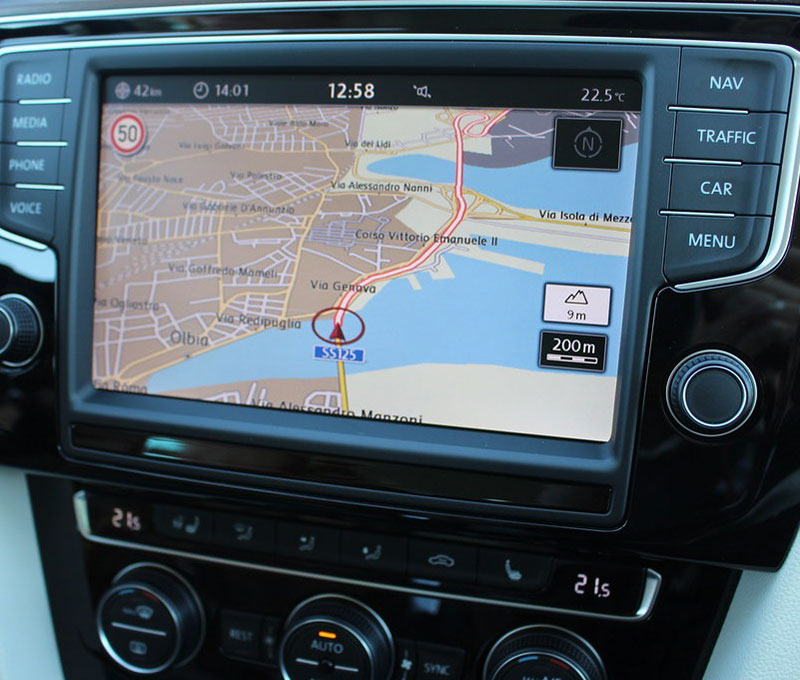
Before embarking on the navigation update, thorough preparation is essential. This ensures you have the correct files for your specific system, the necessary tools are ready, and you avoid potential compatibility issues or interruptions during the update process. Skipping these steps can lead to frustration and wasted time, something busy auto professionals strive to minimize.
Knowing your starting point is critical. You need to identify the current software version of your infotainment system and the version of the map data it’s using. This information helps determine if an update is necessary and available for your specific unit.
How to Check Your System Information:
The exact steps can vary slightly depending on whether your 2014 Passat is equipped with the RNS 510, RNS 315, or potentially an early Discover Media system (though less common for this model year). However, the general process is similar:
Turn on the Ignition: Ensure the car’s ignition is on, but the engine doesn’t necessarily need to be running. Powering the infotainment system is sufficient.
Access the Setup/Menu: Press the SETUP or MENU button on your infotainment unit. This button is usually located near the screen or control knob.
Navigate to System Information: Look for an option labeled System Information, Version Information, System Settings, or similar. You may need to scroll through several menu pages.
Locate Software and Map Data: Within the system information screen, you should find details about:
Software Version/Firmware Version: This identifies the operating software of the unit itself. Note down the entire version number or string.
Map Data Version/Navigation Database: This indicates the specific version of the maps currently installed. It often includes a year, region code (e.g., EUR, NAR for North America), and version number. Record this information accurately.
Example (RNS 510): You might navigate through Setup -> System -> Version Information.
Example (RNS 315): It might be under Setup -> System -> Navigation Database Version.
Why is this important? This information is crucial when searching for updates. You need to match the update files to your specific hardware and software generation to ensure compatibility.
How to Determine if an Update is Available:
Once you have your current version information, you need to check for available updates.
Visit the Official Volkswagen Navigation Portal: The primary and most reliable source is the official Volkswagen website dedicated to map updates. Volkswagen often provides a portal where you can enter your Vehicle Identification Number (VIN) or select your model, year, and infotainment system type.
Navigate to the owner’s section or service section of your regional VW website (e.g., vw.com for the US).
Look for links related to Maps, Navigation Updates, or Infotainment Updates.
Follow the prompts to identify your vehicle and system.
Compare Versions: The portal will typically show the latest available map version for your specific system. Compare this latest version with the map version you recorded from your car. If the online version is newer (e.g., a later year or higher version number), an update is available.
Software/Firmware Updates: Besides maps, check if there are separate firmware or software updates for the infotainment unit itself. These are less frequent than map updates but can improve overall system stability and performance. The VW portal should indicate if system software updates are available.
Dealership Check: You can always contact your local Volkswagen dealership’s service department. They have access to the latest information and can confirm update availability for your VIN. However, performing the update yourself can often be more cost-effective and convenient if you have the technical aptitude.
Note on Older Systems (RNS 510/315): Be aware that Volkswagen may have phased out free map updates for older systems like the RNS 510 and RNS 315, common in the 2014 Passat. Updates might require purchase directly from VW, through their partners (like HERE Maps, previously Navteq), or potentially from reputable third-party map providers specializing in automotive navigation. Always prioritize official sources for security and compatibility.
Having the right tools prepared beforehand streamlines the update process significantly.
A USB Drive or SD Card: This is the most critical tool.
Type: Check your Passat’s infotainment system. RNS 510 systems often use SD cards for updates, while Discover Media systems typically use SD cards or USB drives. RNS 315 might use SD cards. Verify the correct slot available on your unit (usually on the front faceplate or inside the glove compartment).
Storage Capacity: Map update files can be quite large, often exceeding 15-20GB, especially for regions like North America or Europe. A USB drive or SD card with at least 32GB of storage is highly recommended. Using a 64GB or even 128GB card/drive provides ample space and avoids potential issues with near-full capacity. Ensure the storage device is of good quality from a reputable brand to minimize data corruption risks.
Formatting: The storage device must be formatted correctly. Most VW systems require FAT32 or sometimes exFAT. FAT32 has a file size limit of 4GB, which can be problematic for large, single map files. If the download instructions specify exFAT, use that format as it supports larger files. We will cover formatting in the step-by-step guide.
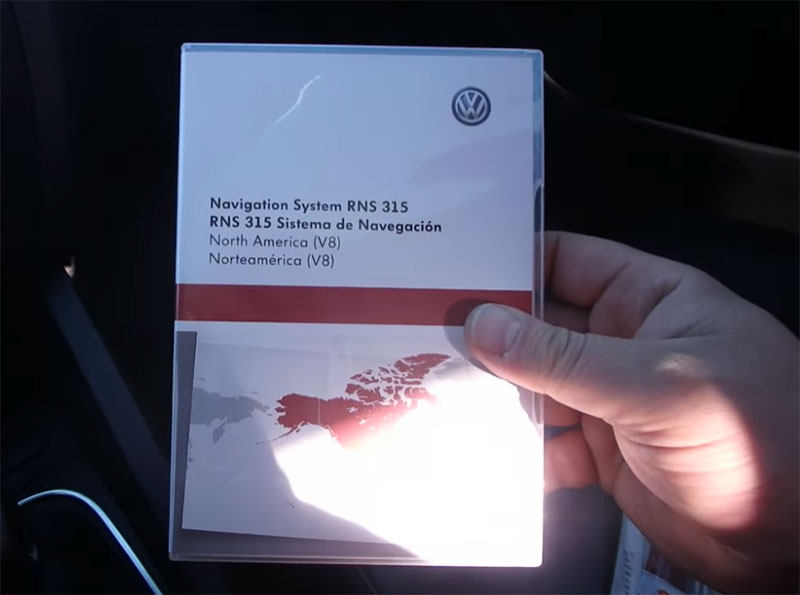
A Stable Internet Connection: You will need a reliable internet connection to download the large map update files. A wired connection is generally more stable than Wi-Fi, but a strong Wi-Fi signal will suffice. Avoid using mobile hotspots with data caps, as downloads can consume significant data. Ensure the download completes fully without interruption.
A Computer: You need a Windows PC or Mac to download the update files from the internet and transfer them to the USB drive or SD card. Ensure your computer has sufficient free disk space to temporarily store the downloaded files before transferring.
Volkswagen Account or Update Software (System Dependent):
VW Download Manager: Some newer VW systems (like Discover Media/Pro) might require using a dedicated Volkswagen Download Manager application installed on your computer. This tool often handles the download and preparation of the SD card/USB drive. Check the instructions on the VW navigation portal.
Volkswagen ID: You might need to register for a free Volkswagen ID (account) on the VW website to access the map download section.
Older Systems (RNS 510/315): Often, these systems involve downloading a compressed file (like .zip or .rar) directly, which you then need to extract and copy manually to the prepared SD card. Specific software isn’t always required beyond a standard file extraction tool (like 7-Zip or WinRAR).
Ensuring compatibility between the update files and your specific infotainment system is paramount. Using the wrong update can lead to system malfunction or failure.
Which Infotainment Systems Are Supported?
The 2014 Volkswagen Passat (often designated B7 generation, particularly in North America and Europe pre-MQB platform) was typically equipped with one of the following systems:
RNS 510: A premium navigation system with a hard drive, DVD drive, touchscreen, and SD card slot. Known for its comprehensive features but can be slower than newer systems. Updates usually involve SD cards or sometimes DVDs (though SD cards are more common now).
RNS 315: A more budget-friendly navigation system compared to the RNS 510. It features a touchscreen, SD card slot, and often integrated Bluetooth. Map data is typically stored on an SD card, and updates usually require a specific VW-sourced SD card or a downloadable update applied via SD.
Discover Media (Less Common for 2014): While primarily introduced with the MQB platform (Golf Mk7, Passat B8), some very late 2014 models in certain markets might have received an early version. These systems typically use SD cards for map data stored in the glovebox unit. Updates are usually managed via the VW portal and downloaded to an SD card or USB.
It is crucial to correctly identify your system. The system’s appearance, button layout, and the information displayed in the ‘System Information’ menu (as checked previously) are key identifiers. The VW navigation portal will guide you based on your VIN or manual selection.
Technical Requirements to Consider:
Storage Device Format: As mentioned, FAT32 or exFAT is typically required. Using NTFS (standard Windows format) will usually result in the car not recognizing the device. Formatting will erase all existing data on the USB/SD card, so back up any important files beforehand.
File Structure: When copying downloaded files to the USB/SD card, the folder structure is often critical. The update instructions usually specify exactly how the files and folders should be arranged on the root directory of the storage device. Do not alter the folder names or structure unless explicitly told to do so. For RNS systems, you often need to extract the contents of a downloaded archive directly onto the root of the SD card.
Power Supply During Update: The update process can take a significant amount of time (30 minutes to over an hour, sometimes even longer). It’s crucial that the car’s infotainment system remains powered throughout the entire process. Interruptions (like turning off the ignition) can corrupt the system. It’s often recommended to perform the update with the engine running to ensure the battery doesn’t drain, or connect a battery charger/maintainer if performing the update with only the ignition on.
Single Update Source: Only place the navigation update files on the USB/SD card. Do not have other files (music, documents) mixed in, as this can sometimes interfere with the system’s ability to detect the update.
By diligently completing these prerequisite steps, you set the stage for a successful and trouble-free VW Passat 2014 navigation update. This preparation minimizes potential headaches and ensures you are working with the correct resources for your specific vehicle, reflecting the precision and care valued by automotive professionals.
Now that you have completed the essential preparations, you are ready to proceed with the actual update process for your VW Passat 2014 navigation system. This section provides a detailed, step-by-step guide. Following these instructions carefully will help ensure a smooth installation. For automotive technicians, mastering this process adds a valuable skill to your repertoire, enhancing service offerings. Remember that precision and patience are key.
3.1 Download the Update
The first active step is acquiring the correct update files for your specific Passat and navigation system.
Visit the Official Volkswagen Website: Navigate to the official Volkswagen website for your region. Look for sections related to Owners, Service & Accessories, or Technology. There should be a dedicated page for Map Updates or Navigation Updates.
Enter Vehicle Details: You will likely need to identify your vehicle. This can usually be done in one of two ways:
Enter VIN: Providing your 17-digit Vehicle Identification Number (VIN) is the most accurate method. The VIN allows the system to pinpoint your exact model, year, and factory-installed infotainment system.
Manual Selection: If VIN entry isn’t available or preferred, you’ll need to manually select your vehicle model (Passat), model year (2014), and identify your infotainment system (RNS 510, RNS 315, or Discover Media if applicable). Use the information you gathered in the prerequisite stage.
Find the Correct Update: Once your vehicle and system are identified, the portal should display the available updates.
Map Updates: Look for the latest available map version for your region (e.g., North America V18, Europe V20). Verify that this version is newer than the one currently installed in your car.
System Software/Firmware Updates: Check separately if any system software updates are listed for your unit. It’s generally advisable to install system software updates before map updates if both are available, but follow VW’s specific instructions.
Download the Latest Map Update File:
Select the Correct Region: Ensure you download the map data for the geographical region you need (e.g., North America, Europe West, Europe East). Some systems might allow multiple regions, while others are region-locked.
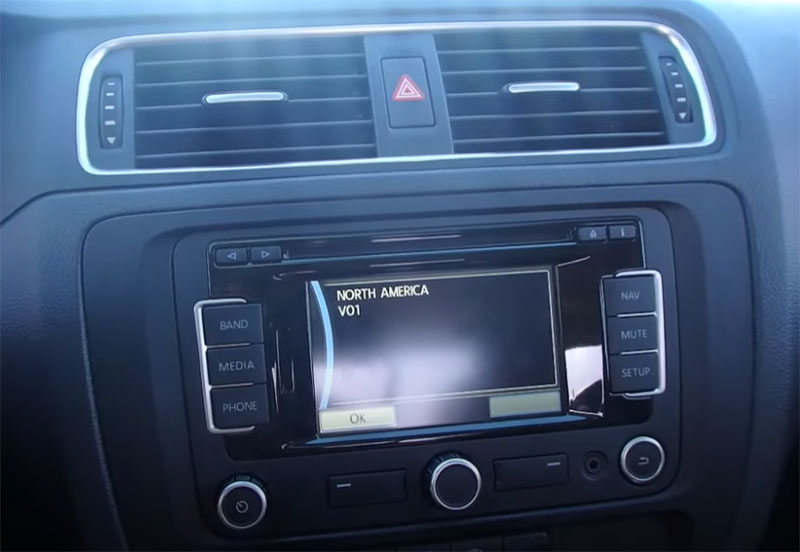
Initiate Download: Click the download link for the appropriate map version. Map files are large (often 15GB-30GB+), so the download will take time depending on your internet speed. Ensure your computer has enough free space.
Download Manager (if required): If the VW portal prompts you to use a dedicated Download Manager application (common for Discover systems), download, install, and run it. This application will typically manage the download process and may also handle the preparation of the USB/SD card.
Direct Download (.zip/.rar): For older systems like RNS 510/315, you might download a single large compressed file (e.g., map_update_NAR_V18.zip).
Purchase (if required): If free updates are no longer offered for your system, the portal will guide you through the purchase process before allowing the download. Prices can vary significantly depending on the region and system, potentially ranging from $50 to over $150 USD or equivalent.
Important: Only download updates from official Volkswagen sources or their designated partners (like HERE). Downloading from unofficial forums or torrent sites carries significant risks, including malware, corrupted files, bricked systems, and voiding potential warranties.
=> For a complete navigation update, contact AutoExplain via WhatsApp at +1(936)2896695
Once the download is complete, you need to prepare your storage medium correctly.
Select the Correct Storage Medium: Use the USB drive or SD card identified as compatible with your Passat’s system (check the slot type). Ensure it has sufficient capacity (32GB or more recommended).
Backup Existing Data: If the USB drive or SD card contains any important files, back them up to your computer now. The next step will erase everything on the device.
Format the Storage Device: This is a critical step.
Connect to Computer: Insert the USB drive or SD card into your computer.
Open File Explorer (Windows) or Disk Utility (Mac).
Right-click on the drive in File Explorer (Windows) and select Format. On Mac, select the drive in Disk Utility and click Erase.
Choose File System: Select the correct file system as specified by the VW update instructions.
FAT32: Commonly required, especially for older systems. Good compatibility but has a 4GB individual file size limit. If your downloaded map data consists of many smaller files, FAT32 is usually fine.
exFAT: Often required for newer systems or very large map files (exceeding 4GB). Offers better handling of large files and storage capacities.
Do NOT use NTFS or Mac OS Extended (Journaled).
Allocation Unit Size: Usually, Default is appropriate.
Volume Label: You can give it a simple name like VW_UPDATE (optional).
Quick Format: Ensure the Quick Format option is checked (Windows) for speed.
Start Formatting: Click Start (Windows) or Erase (Mac). Confirm any warnings about data deletion.
Wait for the formatting process to complete.
Formatting Guide Table:
| File System | Compatibility | Max File Size | Recommended Use for VW Updates |
| FAT32 | High (most systems) | 4GB | Older systems (RNS), smaller map file structures |
| exFAT | Moderate (newer systems) | Very Large | Newer systems (Discover), large single map files |
| NTFS | Low (Windows only) | Very Large | Not recommended for VW updates |
Copy the Update File(s) onto the Storage Device:
If Using VW Download Manager: The manager application might format and copy the files automatically. Follow the on-screen instructions within the application. It will likely prompt you to select the target USB/SD drive.
If Manually Copying (from .zip/.rar):
Extract the Files: If you downloaded a compressed file (.zip, .rar, .7z), you need to extract its contents using software like 7-Zip (free, recommended), WinRAR, or the built-in Windows/Mac extraction tool. Crucially, extract the contents directly to the root directory of the formatted USB drive/SD card. Do not create an extra folder on the storage device and place the extracted files inside it, unless specifically instructed by VW. The system looks for specific files/folders (like maps, pkgdb, metainfo2.txt) directly in the root.
Verify Structure: After extraction/copying, the root of your USB/SD card should contain the folders and files exactly as they were structured within the downloaded archive or as prepared by the Download Manager. There should not be a single enclosing folder containing everything.
Wait for Completion: Copying large files can take some time. Ensure the process finishes completely without errors.
Safely Eject the Storage Device: Once copying is complete, always use the ‘Safely Remove Hardware’ (Windows) or ‘Eject’ (Mac) function before physically removing the USB drive or SD card from your computer. This prevents data corruption.
With the prepared USB/SD card ready, it’s time to install the update in your Passat.
Prepare the Car:
Location: Park the car in a safe, well-ventilated area (if running the engine) where it can remain undisturbed for potentially over an hour.
Power: Decide whether to run the engine or use a battery charger.
Engine Running: This is often the safest option to ensure continuous power. Park outside or in a well-ventilated garage.
Ignition On + Battery Charger: If you prefer not to run the engine, turn the ignition to the ‘ON’ position (without starting the engine) and connect a suitable automotive battery charger/maintainer to prevent battery drain. Do not rely on the battery alone for long updates.
Turn Off Accessories: Turn off unnecessary electrical consumers like headlights (use daytime running lights if needed), climate control fans, seat heaters, etc., to conserve power if not running the engine.
Insert the USB Drive / SD Card:
Turn on the Infotainment System: Make sure the navigation system is powered on.
Locate the Port/Slot: Find the correct USB port or SD card slot for your system. RNS 510/315 usually have an SD slot on the front. Discover Media often uses an SD slot in the glovebox unit. Some systems might use a specific USB port designated for updates (check your owner’s manual).
Insert Gently: Insert the prepared USB drive or SD card firmly but gently into the correct slot.
Access the Update Menu and Select the Update File:
Automatic Detection: In many cases, the system will automatically detect the update medium shortly after insertion and display a prompt asking if you want to update the software/navigation data.
Manual Initiation: If no prompt appears automatically:
Press the SETUP or MENU button.
Navigate to System Information, Version Information, or a dedicated Software Update or System Update menu option.
Look for an option like Update Software, Update Maps, or Source. Select the source (SD Card or USB).
The system should scan the device and identify the available update package.
Select the Update: The screen should display details about the update found on the storage device (e.g., Map Data – North America V18). Confirm that this is the update you intend to install. Select the update package and choose an option like Start Update, Install, or Continue.
Follow On-Screen Prompts: The system will likely display some information about the update process, estimated duration, and warnings (e.g., not to switch off the ignition). Read these carefully and confirm you wish to proceed.
Wait for the Update to Complete: This is the longest part of the process.
Duration: Be prepared to wait anywhere from 30 minutes to 90 minutes, or possibly longer, depending on the system, the size of the update, and the speed of the storage medium. The screen should display a progress bar or percentage indicator.
Do NOT Interrupt: It is absolutely critical not to interrupt the process. Do not turn off the ignition (unless instructed by the system at specific points, which is rare), do not remove the USB/SD card, and avoid pressing buttons unnecessarily. Interruptions can lead to data corruption and potentially render the navigation system unusable, requiring professional intervention.
System Reboots: The infotainment system may reboot one or more times during the update process. This is normal. Wait patiently for it to resume.
Confirmation Message: Once the update is successfully completed, the system will typically display a confirmation message indicating the update was successful and may prompt you to restart the system or remove the storage device. Follow the final on-screen instructions.
After the confirmation message appears and the system potentially restarts, it’s essential to verify that the update was installed correctly and the navigation system is functioning as expected.
Remove Storage Device: Once prompted or after confirming completion, safely remove the USB drive or SD card. Store it safely; you might need it again if issues arise, or for future reference.
Check System Information: Go back into the SETUP/MENU -> System Information/Version Information menu, just as you did in the preparation stage.
Verify Map Version: Check the displayed Map Data Version or Navigation Database information. It should now reflect the new version number you just installed (e.g., North America V18).
Verify Software Version (if applicable): If you also updated the system firmware, check that the Software Version reflects the new update.
Test Navigation Features: Perform some basic tests to ensure core functionality works:
Map Display: Check if the map displays correctly for your current location. Zoom in and out, pan around the map.
Address Entry: Try entering a known address and see if the system finds it and calculates a route.
POI Search: Search for a nearby point of interest (like a gas station or restaurant) and see if the results seem current.
Route Calculation: Calculate a route to a destination a moderate distance away. Check if the route seems logical and the estimated travel time is reasonable.
GPS Signal: Ensure the system is acquiring a GPS signal and accurately showing your vehicle’s position on the map.
Responsiveness: Check if the system feels responsive to touch inputs and commands.
If the version information is updated and basic navigation functions work correctly, the update was successful. You can now enjoy the benefits of your updated VW Passat 2014 navigation system. For professionals, this successful verification step completes the service, ensuring the client receives a fully functional and enhanced system.
Even with careful preparation, you might occasionally encounter issues during the VW Passat 2014 navigation update process. Understanding common problems and their potential solutions can save significant time and prevent system damage. For auto technicians, being adept at troubleshooting these scenarios demonstrates expertise and builds customer trust.
This is one of the most frequent initial hurdles. The car’s infotainment system fails to detect the inserted USB drive or SD card, preventing the update process from starting.
Possible Causes & Solutions:
Incorrect Formatting:
Cause: The storage device was formatted using an incompatible file system (e.g., NTFS, Mac OS Extended) instead of the required FAT32 or exFAT.
Solution: Reformat the USB/SD card on your computer using the correct file system (FAT32 or exFAT, as specified by VW for your system). Remember this erases all data, so ensure you have the update files backed up. Use the default allocation unit size during formatting.
Incorrect Port/Slot:
Cause: The USB drive or SD card was inserted into the wrong port/slot. Some VW systems have multiple USB ports or SD slots, but only one might be designated for updates.
Solution: Consult your vehicle’s owner’s manual or the infotainment system manual to identify the correct port/slot for software/map updates. For Discover Media, this is often the SD1 slot in the glovebox unit. Try the alternative slot if unsure.
Faulty USB/SD Card:
Cause: The storage device itself might be damaged, corrupted, or simply incompatible (some systems can be picky about brands or types).
Solution: Try a different USB drive or SD card, preferably from a well-known brand. Ensure it meets the capacity requirements (32GB+ recommended). Format the new device correctly and copy the update files again.
Incorrect File Structure:
Cause: The downloaded update files were not copied correctly to the root directory of the storage device. They might be inside an extra folder.
Solution: Re-examine the contents of the USB/SD card on your computer. Ensure the necessary update folders (e.g., maps) and files (e.g., metainfo2.txt) are directly in the root, not nested within another folder you created. Re-extract or copy the files directly to the root if needed.
Device Too Large (Older Systems):
Cause: Very rarely, some older systems (like early RNS units) might struggle with very large capacity SD cards (e.g., 128GB or higher), even if formatted correctly.
Solution: If possible, try a 32GB or 64GB SD card formatted to FAT32 (if file size allows) or exFAT.
System Needs Reboot:
Cause: A temporary glitch in the infotainment system.
Solution: Turn the ignition off, wait a minute, then turn it back on and try inserting the device again. You can also try resetting the infotainment system (check manual for procedure – often involves holding the power button for 10-15 seconds).
The update starts, but the progress bar freezes for an extended period, or the process terminates unexpectedly with an error message.
Possible Causes & Solutions:
Power Interruption:
Cause: The ignition was turned off, the battery voltage dropped too low, or the battery charger was disconnected during the update. This is a critical failure point.
Solution: Ensure continuous power throughout the process (engine running or reliable battery maintainer). If interrupted, do not immediately remove the USB/SD card. Try restarting the ignition. The system might attempt to resume the update. If it fails repeatedly or shows errors, professional diagnosis might be needed.
Corrupted Download Files:
Cause: The map update files downloaded from the internet might be incomplete or corrupted due to an unstable connection.
Solution: Delete the downloaded files from your computer and the USB/SD card. Download the update files again, preferably using a stable wired internet connection. Reformat the USB/SD card and copy the fresh files.
Faulty USB/SD Card:
Cause: Read/write errors on the storage device during the installation process.
Solution: Use a different, high-quality USB drive or SD card. Download the files again and prepare the new device.
Incompatible Update Files:
Cause: You downloaded update files meant for a different infotainment system model or software version.
Solution: Double-check on the official VW portal that you selected the correct vehicle, model year, and infotainment system (RNS 510, RNS 315, etc.). Download the correct specific update package.
System Software Incompatibility:
Cause: The map update might require a specific minimum firmware version of the infotainment system itself, which is not currently installed.
Solution: Check the VW portal for any prerequisite system software/firmware updates for your unit. If available, install the system software update first, then attempt the map update again.
Overheating:
Cause: In rare cases, especially during long updates in hot weather, the infotainment unit might overheat and pause or fail.
Solution: Ensure adequate ventilation. If performing the update in direct sunlight, try moving to a shaded area or running the car’s A/C moderately (if the engine is running). Allow the system to cool down before restarting the process if overheating is suspected.
The update process seemingly completed successfully, the version number might even show as updated, but the map screen is blank, shows errors, or displays only a basic grid.
Possible Causes & Solutions:
Incomplete Installation:
Cause: Although a success message appeared, some crucial map files might not have been written correctly, or the final activation/indexing step failed.
Solution: Try reinstalling the update. Reformat the USB/SD card, copy the files again, and run the update process fully. Ensure you wait for the absolute final confirmation message. Sometimes a system reboot (ignition off/on) after the update can help finalize indexing.
Map Activation Issue (Less Common on OEM Updates):
Cause: Some systems, particularly after major updates or if using non-standard sources, might require an activation step that failed.
Solution: Primarily relevant if using non-official sources. Stick to official VW updates. If using official sources and this occurs, attempt reinstallation. If the issue persists, dealership diagnosis might be needed as it could indicate a deeper software or hardware issue.
Regional Lock/Mismatch:
Cause: You installed map data for a region different from where the vehicle is currently located or configured for.
Solution: Ensure you downloaded and installed the map data package corresponding to your primary driving region (e.g., North America, Europe). If you travel between regions, you might need to switch map data if your system supports it, or ensure the correct regional package is active.
Corrupted System Files:
Cause: The update process itself, although appearing complete, might have corrupted some core navigation system files unrelated to the maps themselves.
Solution: This often requires more advanced intervention. A factory reset of the infotainment system (check manual for procedure, note it might erase settings) could be attempted, followed by reinstalling the update. If this fails, dealership or specialist intervention using diagnostic tools (like VCDS or ODIS) might be necessary.
In the unfortunate event that an update fails badly and the infotainment system becomes unresponsive, stuck in a boot loop, or displays persistent errors, recovery options are limited for the average user but crucial knowledge for professionals.
Attempt Reinstallation: The first step is always to try reinstalling the update using a freshly prepared USB/SD card and confirmed correct files. Ensure stable power.
System Reset: Try performing a system reset (often holding the power button for 10-30 seconds until it reboots). This sometimes clears temporary glitches. Check the owner’s manual for the specific procedure for your RNS or Discover unit.
Factory Reset (Use with Caution): A factory reset via the settings menu (if accessible) might restore basic functionality but will erase all user settings and potentially stored destinations. It won’t necessarily fix a corrupted core system file from a failed update.
Seek Professional Help (Dealership/Specialist): If the system is bricked (unresponsive, black screen, boot loop), user-level fixes are unlikely to succeed.
Dealership: Volkswagen dealerships have specialized diagnostic equipment (ODIS – Offboard Diagnostic Information System) that can often force-flash firmware, diagnose hardware issues, and potentially recover the unit.
Independent Specialists: Some independent auto electronics repair shops specialize in infotainment systems and may have tools and expertise to recover bricked units, sometimes at a lower cost than dealership replacement.
Diagnostic Tools (For Professionals): Technicians with advanced diagnostic tools like VCDS (VAG-COM) or ODIS might be able to access error logs, check module communication, and potentially initiate specific recovery functions or adaptations. However, attempting firmware flashing without proper knowledge and equipment is risky.
Updating your VW Passat 2014 navigation system is a vital maintenance task that significantly enhances your driving experience. It ensures you have access to the latest road networks, points of interest, and benefits from improved system performance and bug fixes delivered through software refinements. The process, while requiring careful attention to detail, is manageable by following a structured approach.
Summarizing the Update Journey:
Preparation is Key: Start by identifying your specific infotainment system (RNS 510, RNS 315, etc.) and checking your current software and map versions. Gather the necessary tools: a correctly formatted USB drive or SD card (32GB+ FAT32/exFAT), a stable internet connection, and access to a computer.
Download with Precision: Obtain the official update files from the Volkswagen navigation portal, ensuring they match your vehicle’s VIN or manually selected system details. Be mindful of potential costs for updates on older systems.
Install Methodically: Transfer the extracted files correctly to the root of the prepared storage device. Insert it into the correct slot in your Passat, ensuring stable power (engine running or battery maintainer). Initiate the update via the system menu and allow the process to complete without interruption, which may take 30-90 minutes or more.
Verify and Troubleshoot: After completion, verify the new map/software version in the system settings and test basic navigation functions. If issues arise (device not recognized, update stuck, maps not displaying), consult the troubleshooting steps, focusing on formatting, file structure, power stability, and file integrity.
Here are some frequently asked questions about VW Passat 2014 navigation updates:
If you find the update process complex or face any difficulties, AutoExplain is here to help! We specialize in car updating navigation, car diagnostics, coding, and programming support, ensuring your VW Passat 2014 navigation update is done smoothly and correctly.
✅ 24/7 Online Support
✅ Professional Guidance for Car Software Updates
✅ Expert Help for VW Navigation Systems
📲 Contact AutoExplain for hassle-free assistance!
WhatsApp: +1(936)2896695
Visit our Website: AutoExplain
Location: 4590 Angus Road, New York, United States

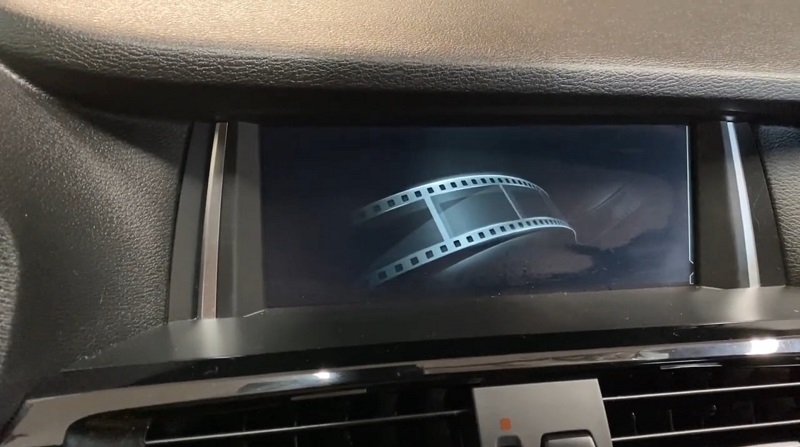
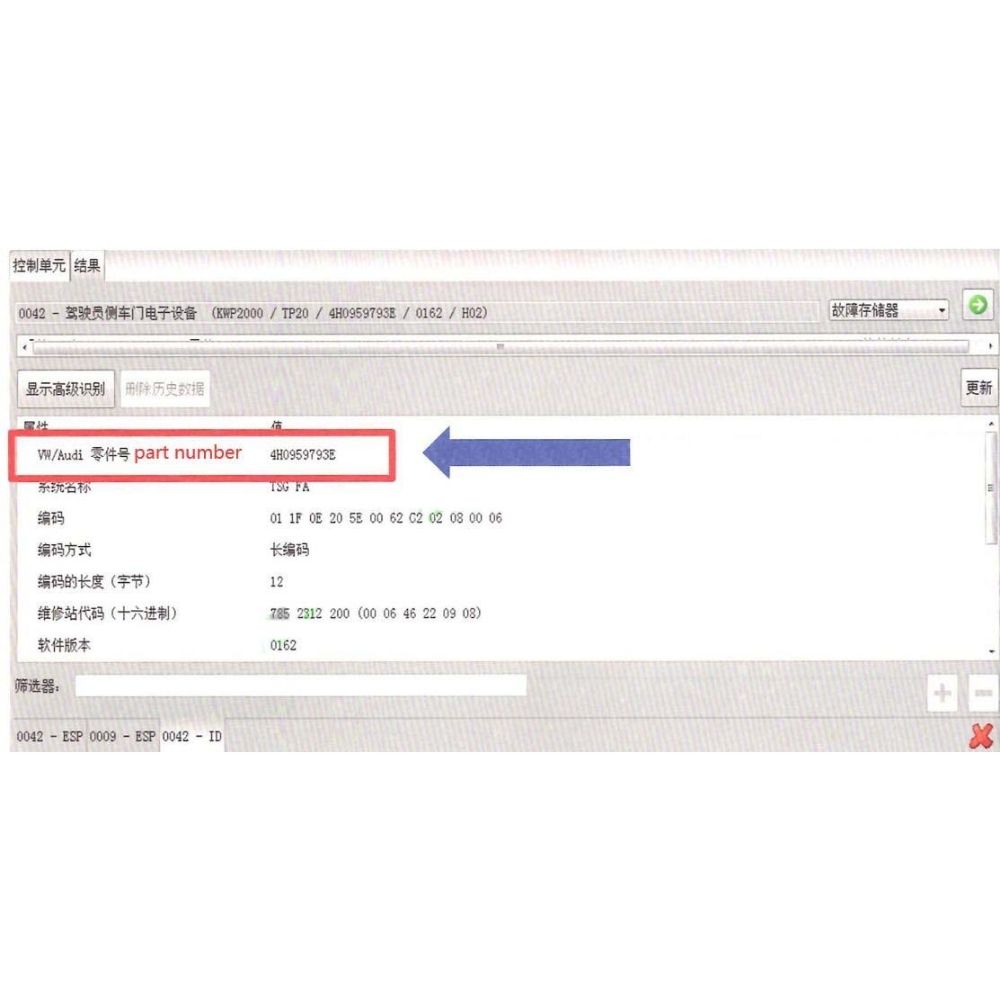
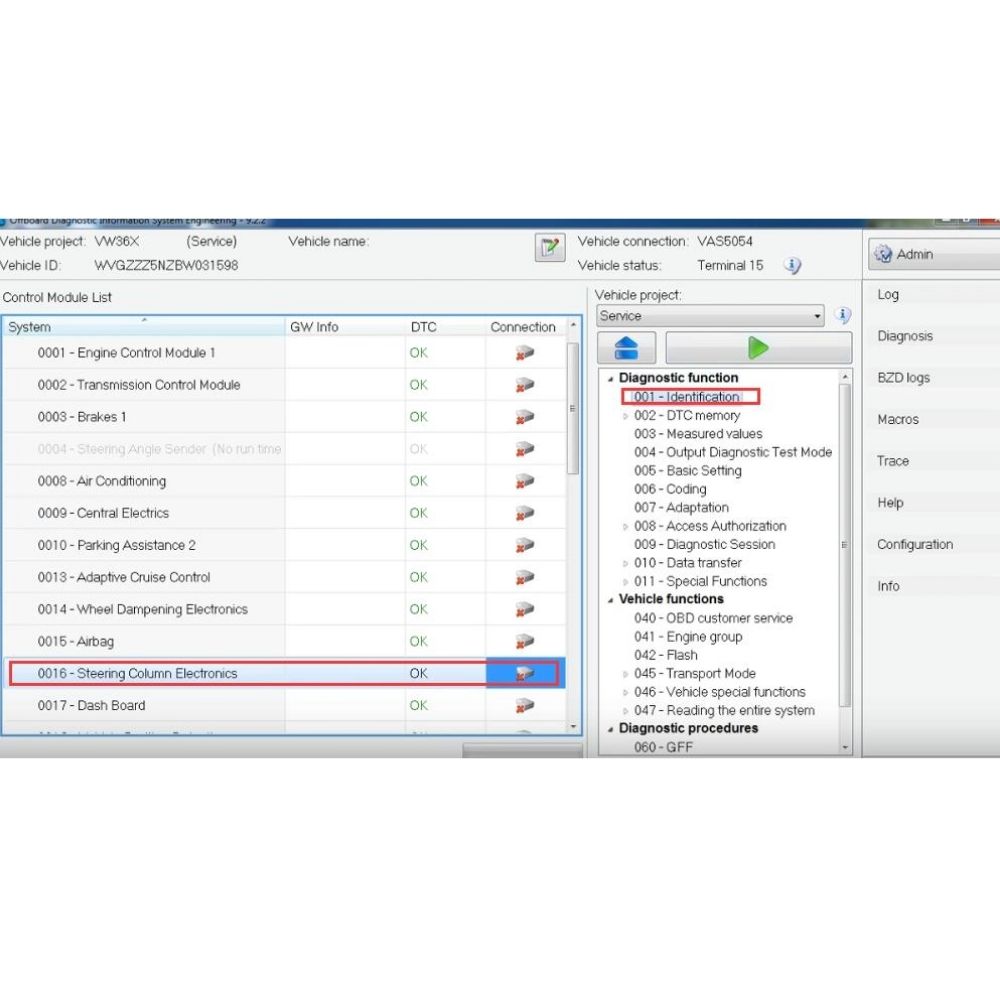

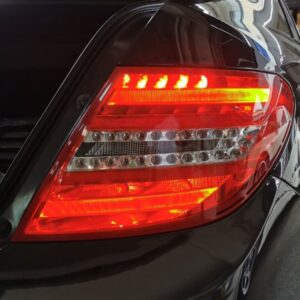
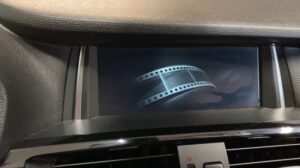
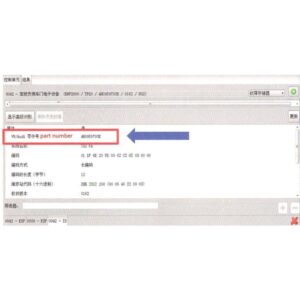
At AutoExplain, we provide automotive online repair service, auto repair tips, car repair manuals & document & training course to help mechanics of all experience levels—fix vehicles efficiently
AUTO EXPLAIN LLC
Employer Identification Number (EIN):
38-4349958
Whatsapp Us: +1(936)2896695
Gmail: [email protected]
Our Workshop: 1500 N Grant ST Sten Denver, Colorado, United States
Copyright 2025 © AutoExplain